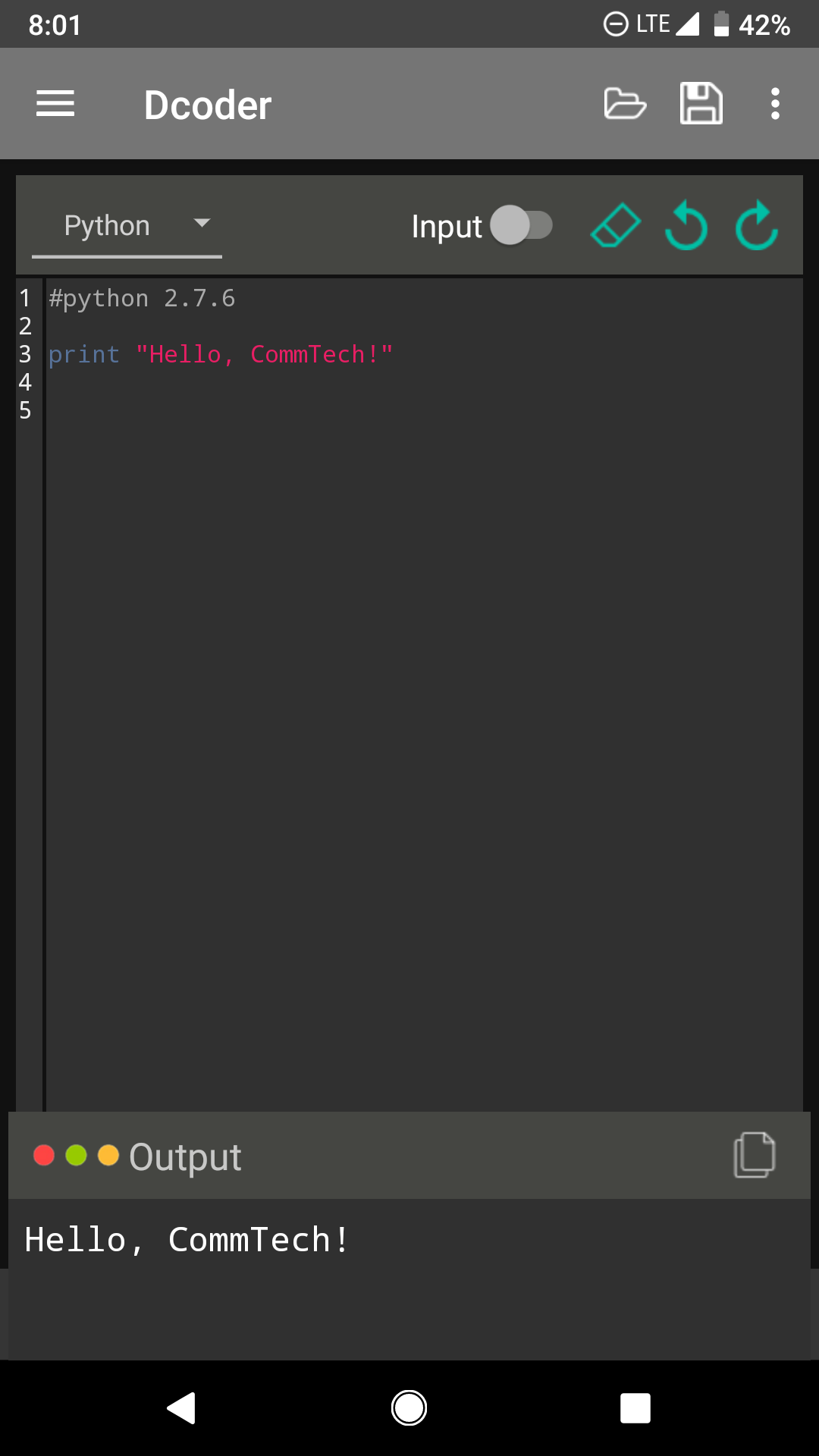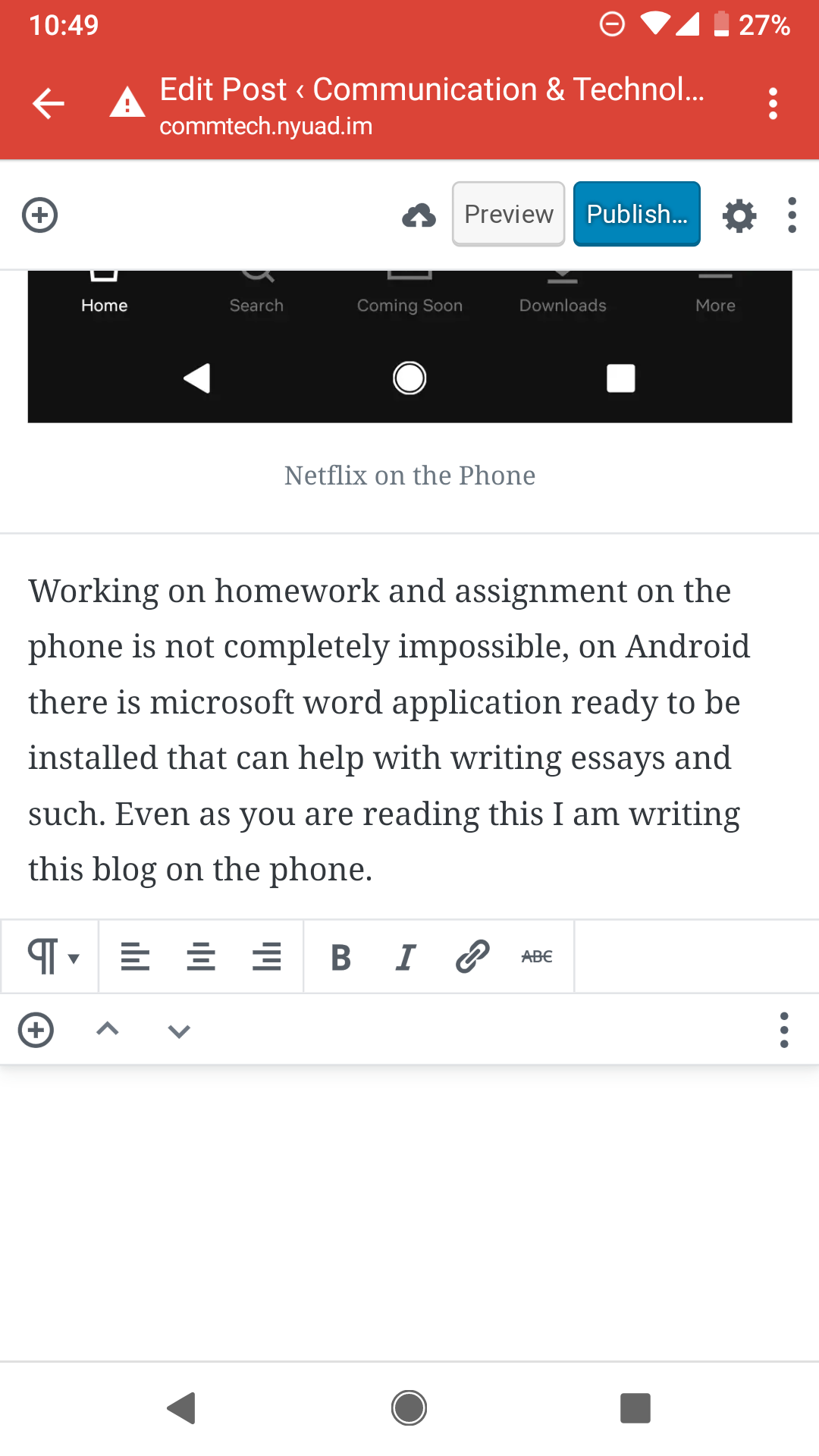For my rewiring assignment, I have decided to entirely use my smartphone for a day, and not use my laptop. This may be normal for people, but for an NYUAD student, both you laptop and your smartphone are you life. Nowadays, it is very easy to integrate yourself into solely using your smartphone for your day to day life. This is because our smartphone can achieve as much as a laptop can. The question here is how convenient and efficient it is to do it!
I use my laptop for surfing the internet, reading (pleasure and academics), watching youtube, netflixing, and coding! For today, I did all of the above on my phone except the coding part. While it is fully possible to code on your phone, it certainly does not look good.

As you can see, it may seem like it is a good idea as first, but being a computer science major who fiest started coding in my laptop, I have completely acclimated myself into coding in my laptop. Dcoder is an IDE compiler that is based in android, and lets you code on the go. When even trying to code a simple print statement, I struggled with the interface and how things are used on the application. I kept on pushing the wrong buttons and always going on and off the IDE to the file system. I just gave up afterwards.

For my entertainment, I am used to watching youtube videos on my phone, but not Netflix. On the one hand, watching youtube videos on the phone is a great experience, especially having a high quality screen with high quality videos. Also, the fact that the videos would typically range from 1 to 10 minutes would help with the experience because holding the phone with your hands for that long would not pose a problem. On the other hand, watching a 25 to a 40 minute show or even a movie on Netflix would really make my hands and arms tire from holding the phone. Now if you are a person who has a nice phone case that acts as a stand for the phone, great on you, however, I did not have that, so I had to hold the phone. The ratio of the screen did not make it a bad experience per se, however it did give me the feeling of wishing for a bigger screen.

Working on homework and assignment on the phone is not completely impossible, on Android there is microsoft word application ready to be installed that can help with writing essays and such. Even as you are reading this I am writing this blog on the phone.

Do not get me wrong, my experience with rewiring my use of technology allowed me to be exposed to new applications of the smartphone. Coding in Decoder was not a complete annoyance, I am confident that this can be used in a teaching setting where people can learn how to code through only their phones. However, since I was exposed through it in a computer or laptop environment, I think I got used to the handiness and convenience of the file system, seamless tabular window changing, and a bigger screen to fit more code. The good thing about having smartphone is when the time urges its use. I even downloaded a scanner application called Tap Scanner which can scan physical documents by taking images and processing them to create good quality PDFs.

Tap Scanner saved me from my fast approaching deadline when I had to scan physical documents and then send them in for submission. For people who are on the go, smartphone can safely replace computers. For me, I had a great experience, though sometimes annoying. This made me realize about some of the dependacies I had for my computer and its utilities.










